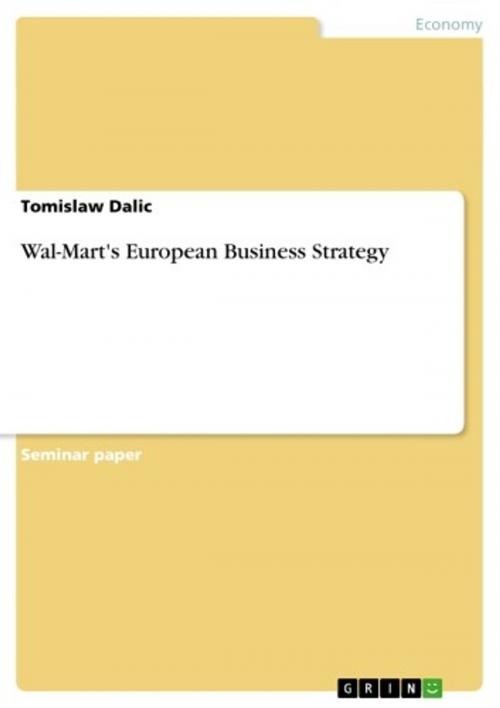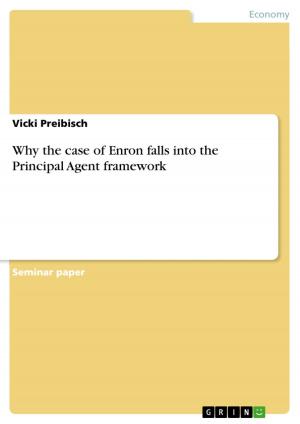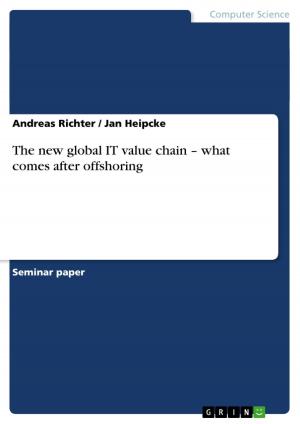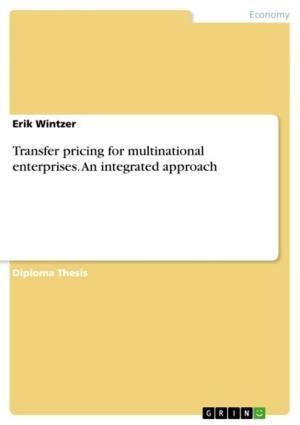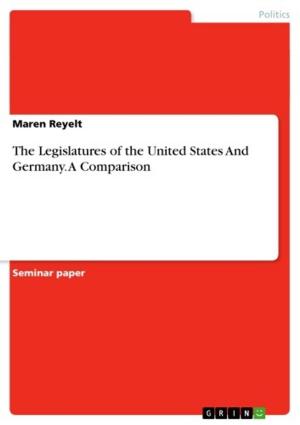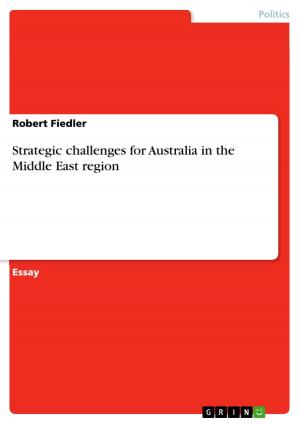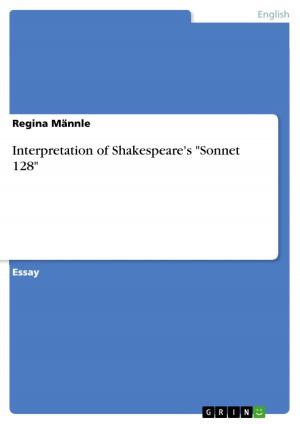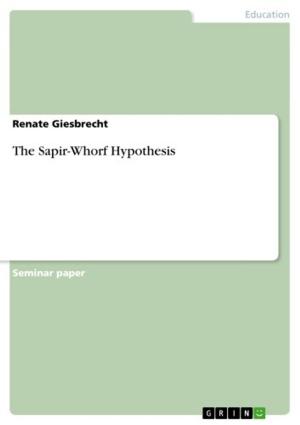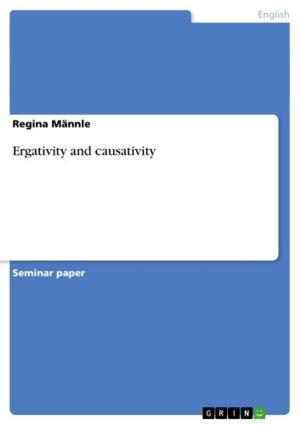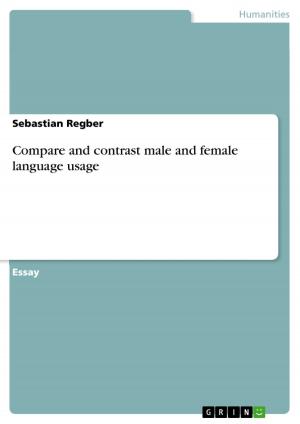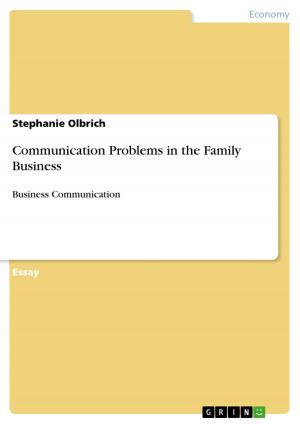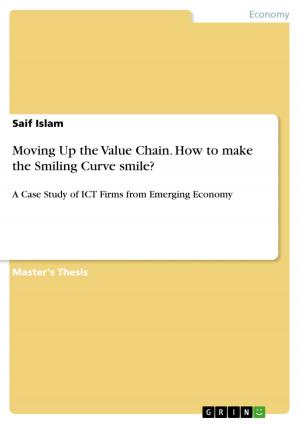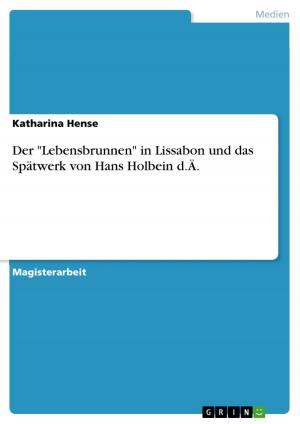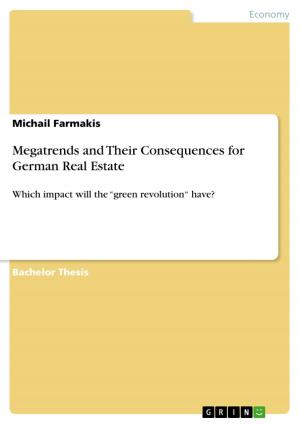| Author: | Tomislaw Dalic | ISBN: | 9783638245364 |
| Publisher: | GRIN Publishing | Publication: | January 15, 2004 |
| Imprint: | GRIN Publishing | Language: | English |
| Author: | Tomislaw Dalic |
| ISBN: | 9783638245364 |
| Publisher: | GRIN Publishing |
| Publication: | January 15, 2004 |
| Imprint: | GRIN Publishing |
| Language: | English |
Seminar paper from the year 2001 in the subject Business economics - General, grade: very good, Maastricht University (Business Administration), course: European Business Startegy, 32 entries in the bibliography, language: English, abstract: How many retailers would one expect to be in the top ten of the global fortune 500? There is one, and it has a firm second position, leaving behind mammoth companies such as Ford and General Motors (www.fortune500.com). Wal-Mart is the world's largest retailer with 195 billion dollars in revenue in the year 2000, with operations mainly concentrated in the United States. Renowned in the United States for their discount centres, they have diversified into wholesaling to sustain the explosive growth of the seventies and eighties. Making use of acquired knowledge in distribution and inventory management technology, these new formulas proved to be profitable as well. However, the United States of America were not big enough to satisfy the needs of such a giant company, and international expansion was inevitable. After entry in South-America and Asia, Europe is the next market to be penetrated by Wal-Mart. The time seems right, as extensive liberalization has opened up the European Union and far-reaching economic integration between member states have created a huge common market, offering scale economies in purchasing and distribution similar to U.S. operations. Wal-Mart can use experience from previous foreign expansions to implement the correct strategy for Europe. This paper analyses Wal-Mart's European strategy, the rational behind its move to Europe and implications for its European competitors. It explains the following problem statement: Wal-Mart's entry into the European market was a strategic move rather than the pursuit of a growth opportunity. A brief review of Wal-Mart's history will be followed by the factors explaining their success in the United States, coming together in a concept called 'strategic fit'. After a short summary of their foreign expansion into South-America to stress the importance of the transferability of the concept of strategic fit, a description of the European retail industry will be given. Then the European retail industry is analysed with the help of the generic five forces model from Porter. The paper ends with a conclusion hinting at the future of the European retail market.
Seminar paper from the year 2001 in the subject Business economics - General, grade: very good, Maastricht University (Business Administration), course: European Business Startegy, 32 entries in the bibliography, language: English, abstract: How many retailers would one expect to be in the top ten of the global fortune 500? There is one, and it has a firm second position, leaving behind mammoth companies such as Ford and General Motors (www.fortune500.com). Wal-Mart is the world's largest retailer with 195 billion dollars in revenue in the year 2000, with operations mainly concentrated in the United States. Renowned in the United States for their discount centres, they have diversified into wholesaling to sustain the explosive growth of the seventies and eighties. Making use of acquired knowledge in distribution and inventory management technology, these new formulas proved to be profitable as well. However, the United States of America were not big enough to satisfy the needs of such a giant company, and international expansion was inevitable. After entry in South-America and Asia, Europe is the next market to be penetrated by Wal-Mart. The time seems right, as extensive liberalization has opened up the European Union and far-reaching economic integration between member states have created a huge common market, offering scale economies in purchasing and distribution similar to U.S. operations. Wal-Mart can use experience from previous foreign expansions to implement the correct strategy for Europe. This paper analyses Wal-Mart's European strategy, the rational behind its move to Europe and implications for its European competitors. It explains the following problem statement: Wal-Mart's entry into the European market was a strategic move rather than the pursuit of a growth opportunity. A brief review of Wal-Mart's history will be followed by the factors explaining their success in the United States, coming together in a concept called 'strategic fit'. After a short summary of their foreign expansion into South-America to stress the importance of the transferability of the concept of strategic fit, a description of the European retail industry will be given. Then the European retail industry is analysed with the help of the generic five forces model from Porter. The paper ends with a conclusion hinting at the future of the European retail market.
